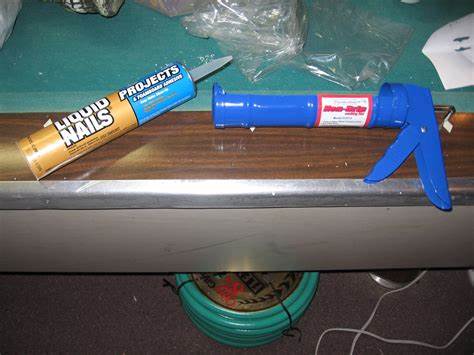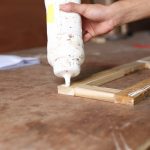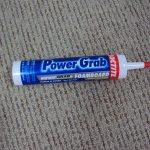Liquid nails are applied to the surface of the material that needs to be bonded together.
When the adhesive dries, it forms a strong bond between the two surfaces. The strength of this bond depends on the type of liquid nail used and how it is applied.
For example, using an all-purpose liquid nail will create a weaker bond than one created with a heavy-duty liquid nail.
How Does Liquid Nails Work?
Contents
- 1 How Does Liquid Nails Work?
- 2 Does Liquid Nails Provide Waterproofing?
- 3 Benefits of Using Liquid Nails for Waterproofing
- 4 Potential Drawbacks of Using Liquid Nails for Waterproofing
- 5 Types of Projects Where You Can Use Liquid Nails for Waterproofing
- 6 Tips on How To Use Liquid Nail for Waterproofing
- 7 Conclusion
Liquid nails are a liquid adhesive that hardens when it dries, making it perfect for bonding materials together.
Liquid nails are used in the construction industry to bond metal to wood, metal to concrete, and wooden structures together.
Liquid nails can also be used in other industries, such as automotive, aerospace, and marine.
Liquid nails bond materials tightly, making them perfect for construction projects that use heavy machinery or materials like steel or concrete that easily bend or break.
Liquid nail is easy to apply and dries quickly, allowing workers to finish a project quickly.
Liquid nails also bond concrete to metal and other concrete structures, so it can be used in many construction projects that require a strong adhesive.
Does Liquid Nails Provide Waterproofing?
Yes, liquid nails can provide a waterproof seal when used in certain applications.
The key is to use a product that has been specifically designed for waterproofing, such as subfloor and deck liquid nails, and to ensure that it is applied correctly.
It is also important to note that while liquid nails may provide waterproofing in certain situations, they are not always suitable for all types of projects or materials.
Benefits of Using Liquid Nails for Waterproofing
Using liquid nails as a waterproofing solution offers several benefits:
- It is easy to apply and requires no special tools or skills.
- It provides strong adhesion and creates a watertight seal.
- It can be used on various types of surfaces.
- It is cost effective compared to other waterproofing solutions.
- It helps protect against moisture and mold growth.
Potential Drawbacks of Using Liquid Nails for Waterproofing
Although there are many advantages to using liquid nails for waterproofing, there are also some potential drawbacks:
- If not applied correctly, it may not provide an effective seal.
- The adhesive can be difficult to remove if needed.
- In some cases, it may not be suitable for certain materials or projects.
- It may not last as long as other waterproofing solutions.
Types of Projects Where You Can Use Liquid Nails for Waterproofing
Liquid nails can be used in various types of projects where water protection is needed, such as:
- Bathrooms – For sealing around bathtubs and showers
- Basements – For sealing around pipes or window frames
- Swimming pools – For bonding tiles or liners together
- Decks – For attaching deck boards or railings together
- Roofs – For attaching shingles or flashing together
Tips on How To Use Liquid Nail for Waterproofing
Here are some tips on how you can use liquid nails effectively for waterproofing:
- Make sure you choose the right product based on your project requirements.
- Prepare the surface by cleaning off any dirt or debris before applying the adhesive.
- Apply an even layer along the entire surface area being bonded together.
- Allow sufficient time for drying before testing its effectiveness (usually 24 hours).
- Re-apply additional layers if necessary until you achieve your desired result.
Conclusion
Liquid nails offer an effective solution when it comes to providing waterproof protection in certain applications around the home or business premises.
However, it’s important to remember that they may not always be suitable in every situation, so make sure you choose the right product based on your project requirements. With proper use and application, you can enjoy reliable water protection with minimal effort.






